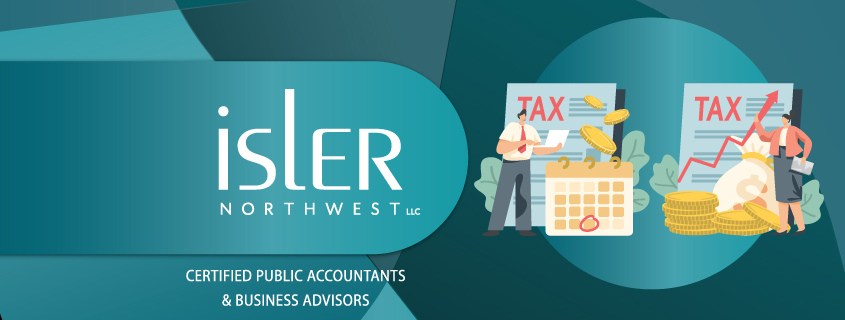Article Highlights:
- Itemized Versus Standard Deductions
- Medical Expenses
- Taxes
- Charitable Contributions
If your tax deductions normally fall short of itemizing your deductions or even if you are able to itemize, but only marginally, you may benefit from using the “bunching” strategy.
The tax code allows most taxpayers to utilize the standard deduction or itemize their deductions if that provides a greater benefit. As a rule, most taxpayers just wait until tax time to add up their eligible expenses and then use the higher of the standard deduction or their itemized deductions.
If you want to be more proactive, you can time the payments of tax-deductible items to maximize your itemized deductions in one year and take the standard deduction in the next.
For the most part, itemized deductions include medical expenses, property taxes, state and local income (or sales) taxes, home mortgage and investment interest, charitable deductions, and casualty losses. The “bunching strategy” is more commonly associated with medical expenses, tax payments and charitable deductions, although there are circumstances in which the other deductions might come into play. There are many opportunities to bunch deductions, and the following are examples of the bunching strategies most commonly used:
Medical Expenses
You contract with a dentist for your child’s braces. The dentist may offer you an up-front, lump sum payment or a payment plan. By making the lump sum payment, the entire cost is credited in the year paid, thereby dramatically increasing your medical expenses for that year. If you do not have the cash available for the up-front payment, then you can pay by credit card, which is treated as a lump-sum payment for tax purposes. If you use a credit card, you must realize that the credit card interest is not deductible, and you need to determine if incurring the interest is worth the increased tax deduction. Another important issue with medical deductions is that only the amount of the total medical expenses that exceeds 7.5% of your adjusted gross income (AGI) is actually deductible. So, there is no tax benefit in bunching medical deductions unless the expenses exceed this limitation.
If the current year is an abnormally high-income year, you may, where possible, wish to put off making medical expense payments until the following year when the 7.5% threshold is less.
Taxes
Property taxes on real estate are generally billed annually at mid-year, and most locales allow property owners to make semi-annual or quarterly payments. Thus, you have the option of paying it all at once or paying in installments. This provides the opportunity to bunch the tax payments by paying one semi-annual installment or two quarterly installments and a full year’s tax liability in one year and only paying one semi-annual installment or two quarterly installments in the other year. In doing so, you are able to deduct 1-½ year’s taxes in one year and 50% of a year’s taxes in the other. If you are thinking of making the property tax payments late as a way to accomplish bunching, you should be cautious. The late payment penalty will probably wipe out any potential tax savings. This strategy won’t work if your mortgage payments include real property taxes that are held by the lender until the taxes are due, as you can only deduct the tax payments that the lender makes on your behalf during the tax year.
If you reside in a state that has state income tax, the state income tax paid or withheld during the year is deductible as a federal itemized deduction. So, for instance, if you are paying state estimated tax in quarterly installments, the fourth-quarter estimate is generally due in January of the subsequent year. This gives you the opportunity to either make that payment before December 31st, and be able to deduct the payment on the current year’s return, or pay it in January before the January due date and use it as a deduction in the subsequent year.
A few words of caution about the itemized deduction for taxes! Taxes are only deductible for regular tax purposes. So, to the extent you are taxed by the AMT (alternative minimum tax), you derive no benefits from the itemized deduction for taxes. Also, through 2025, the maximum amount per year that you can deduct on your federal return for state and local taxes (property taxes and state income or sales taxes) is $10,000 ($5,000 if using the married separate filing status).
Charitable Contributions
Charitable contributions are a nice fit for “bunching” because they are entirely payable at the taxpayer’s discretion. For example, if you normally tithe at your church, you could make your normal contributions during the year and then prepay the entire next year’s tithing in a lump sum in December of the current year, thereby doubling up on the church contribution one year and having no charity deduction for church in the other year. Normally, charities are very active with their solicitations during the holiday season, giving you the opportunity to make the contributions at the end of the current year or simply wait a short time and make them after the end of the year. Be sure you get a receipt or acknowledgment letter from the organization that clearly shows in which year the contribution was made.
If you think a “bunching” strategy might benefit you, please call this office to discuss the issue and set up an appointment for some in-depth strategizing.
If you have any questions, please contact our office at (503) 224-5321. Isler Northwest LLC is a firm of business advisors and CPAs in Portland, Oregon. Our service goal at Isler Northwest is to earn our clients’ trust as their primary business and financial advisor.
Isler Northwest
1300 SW 5th Avenue
Suite 2900
Portland, Oregon 97201



